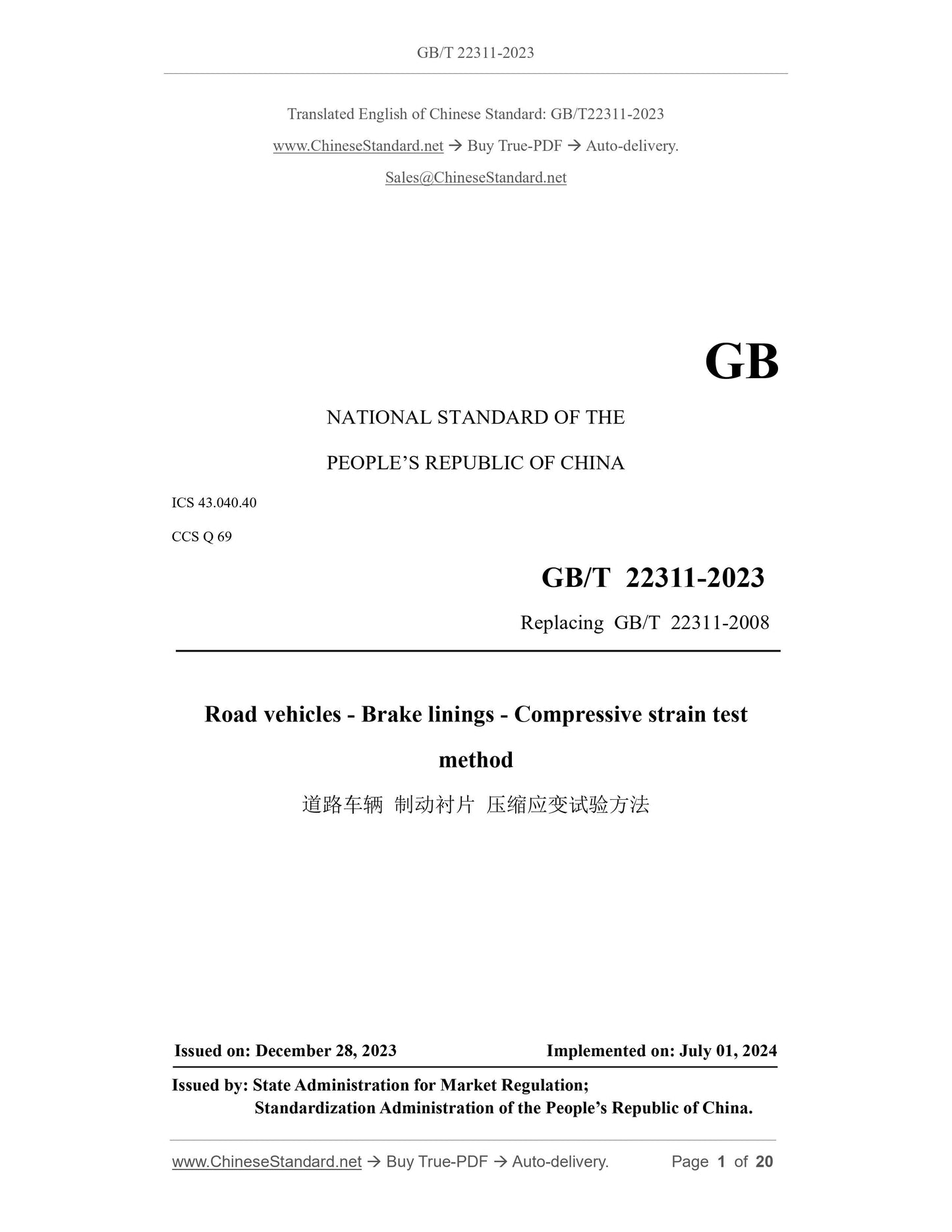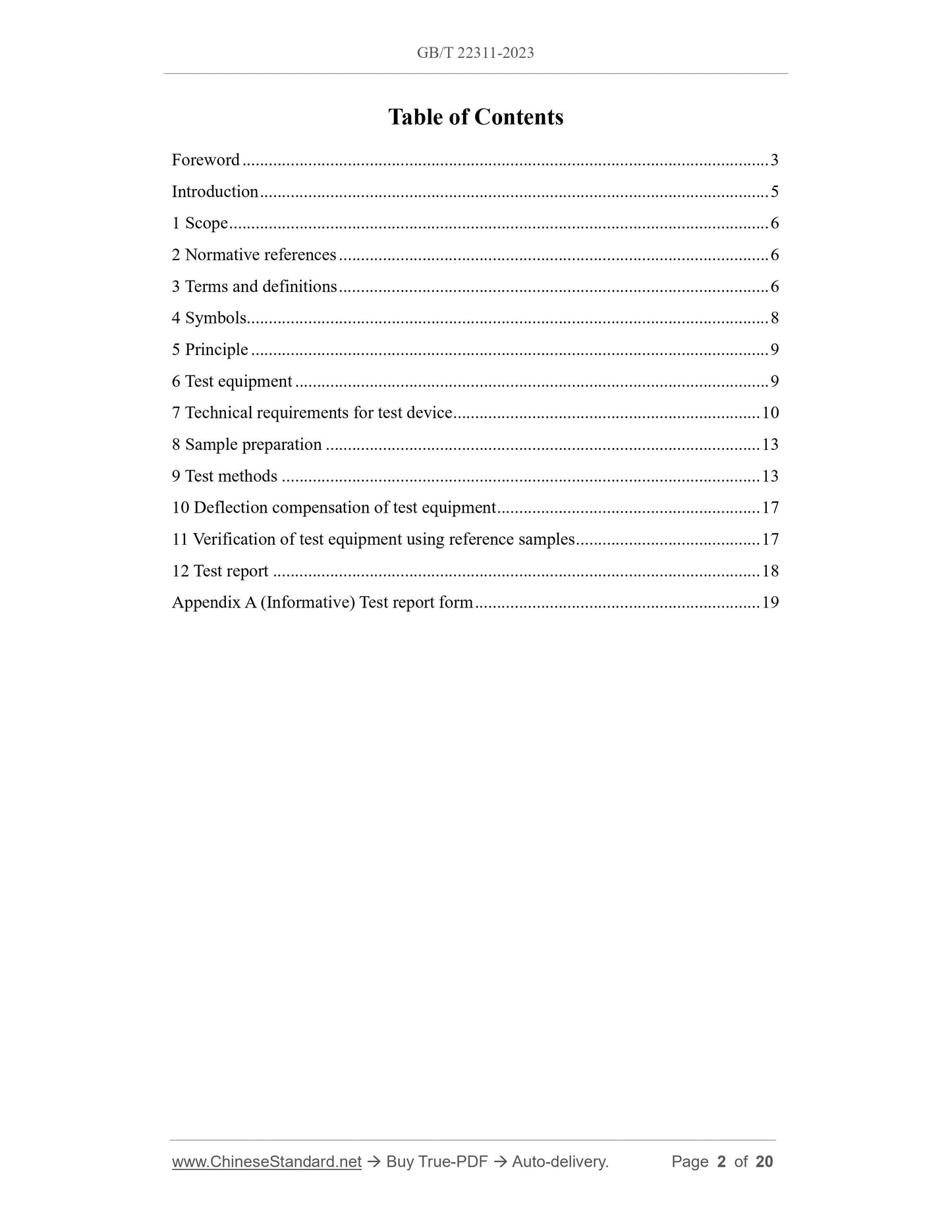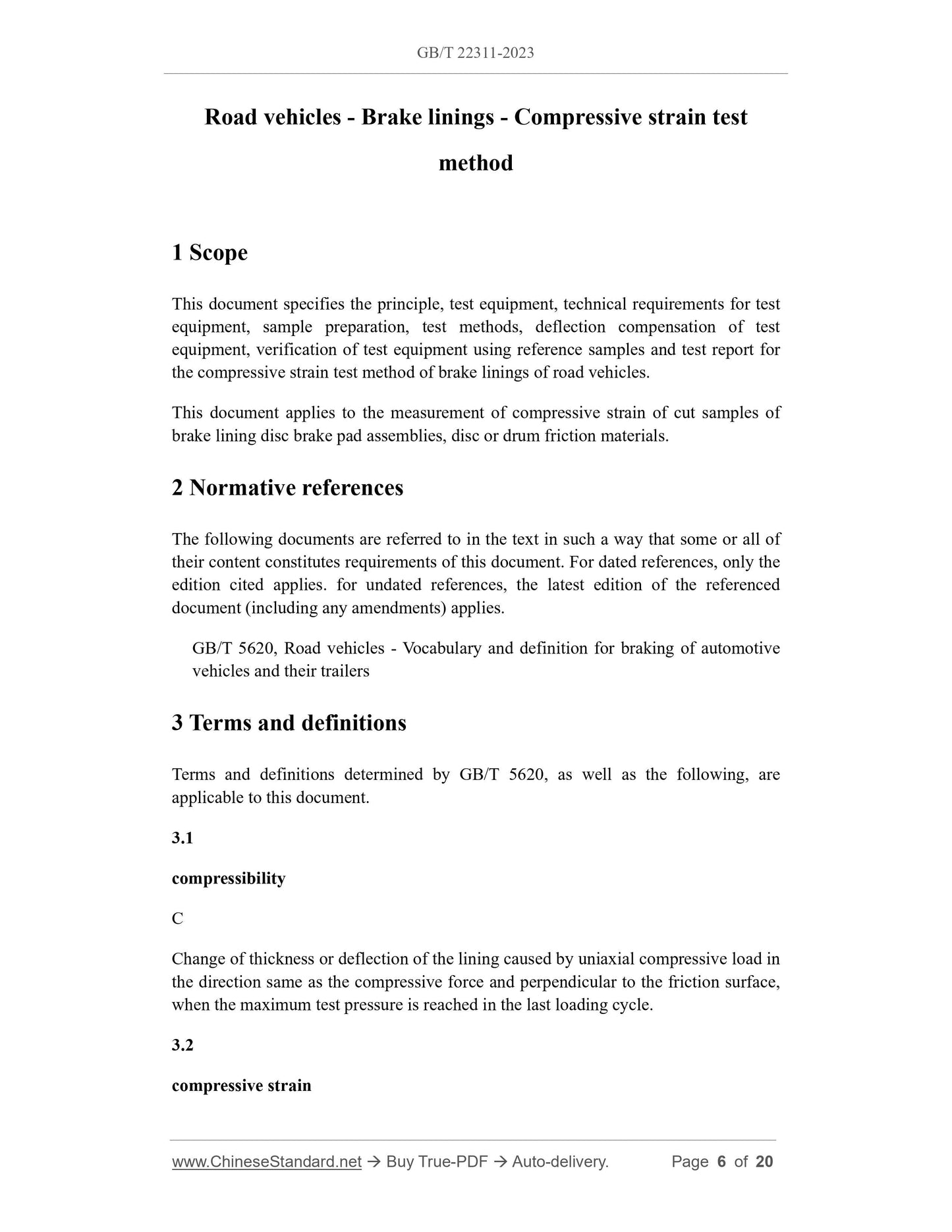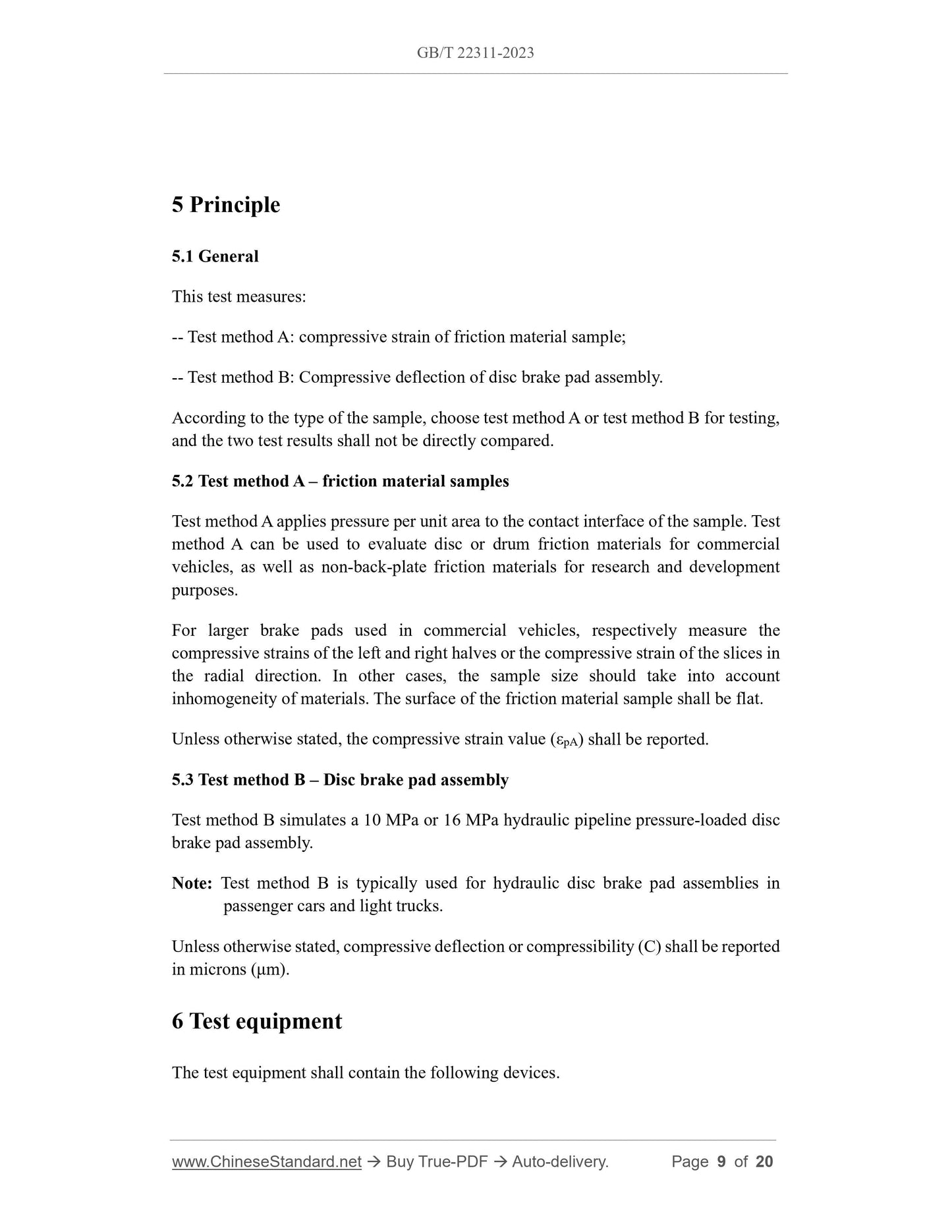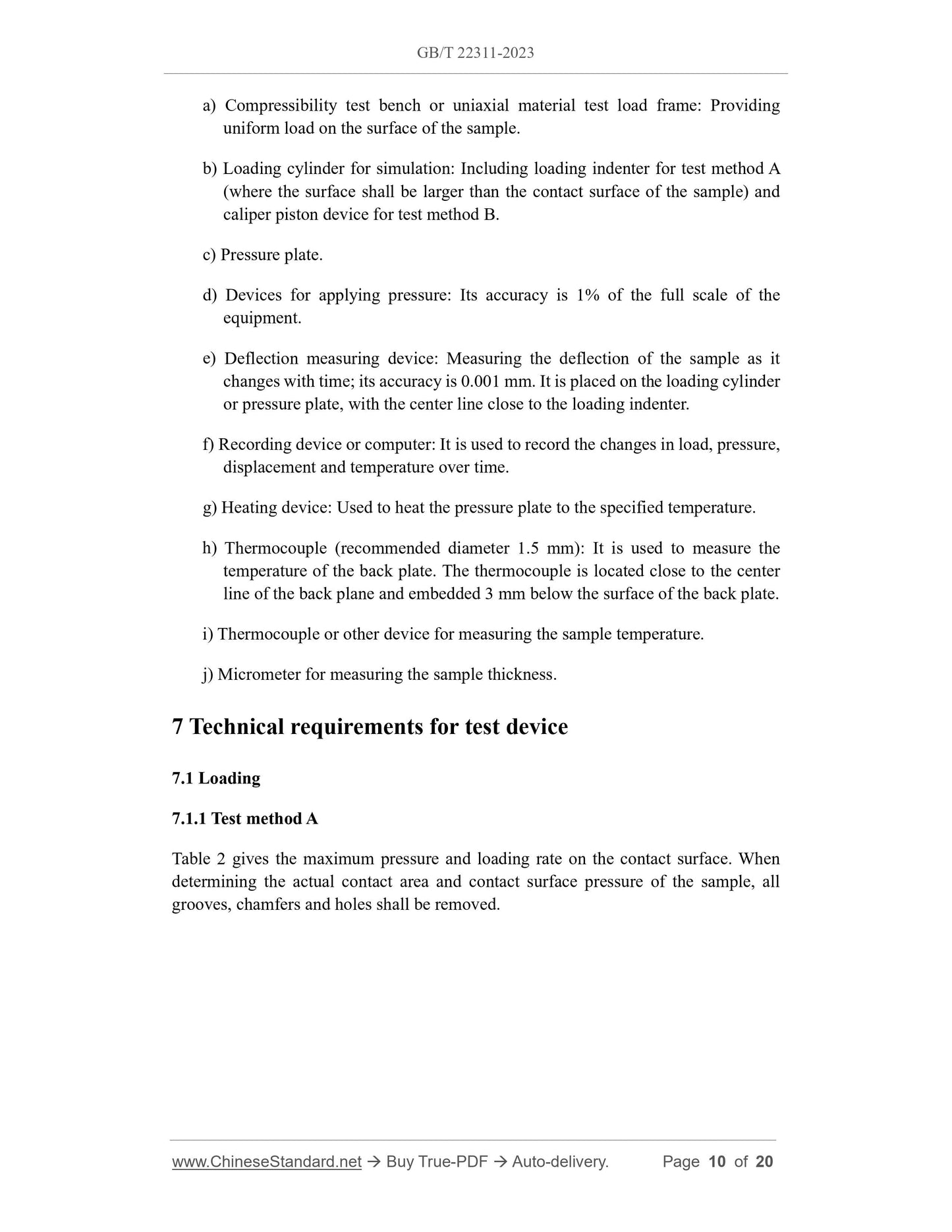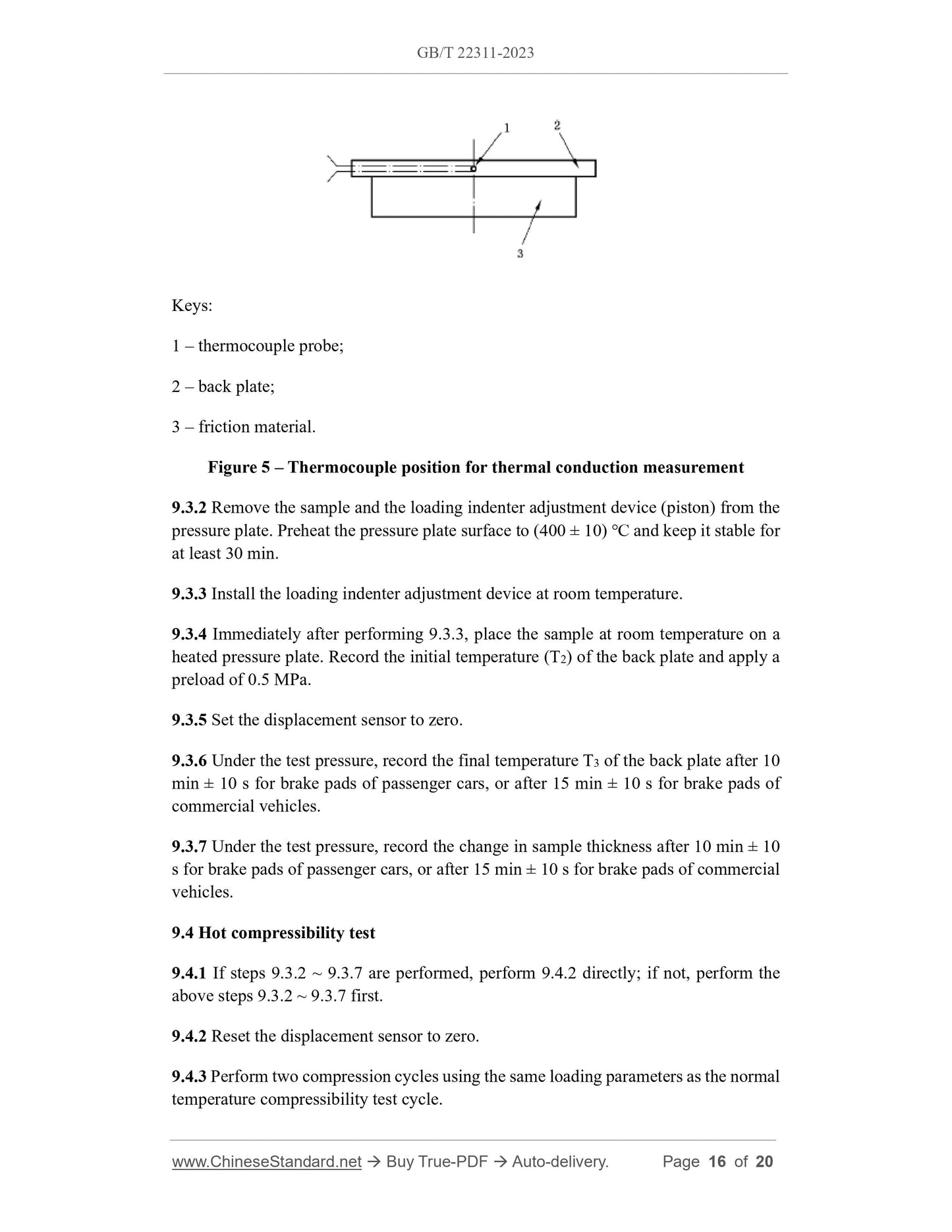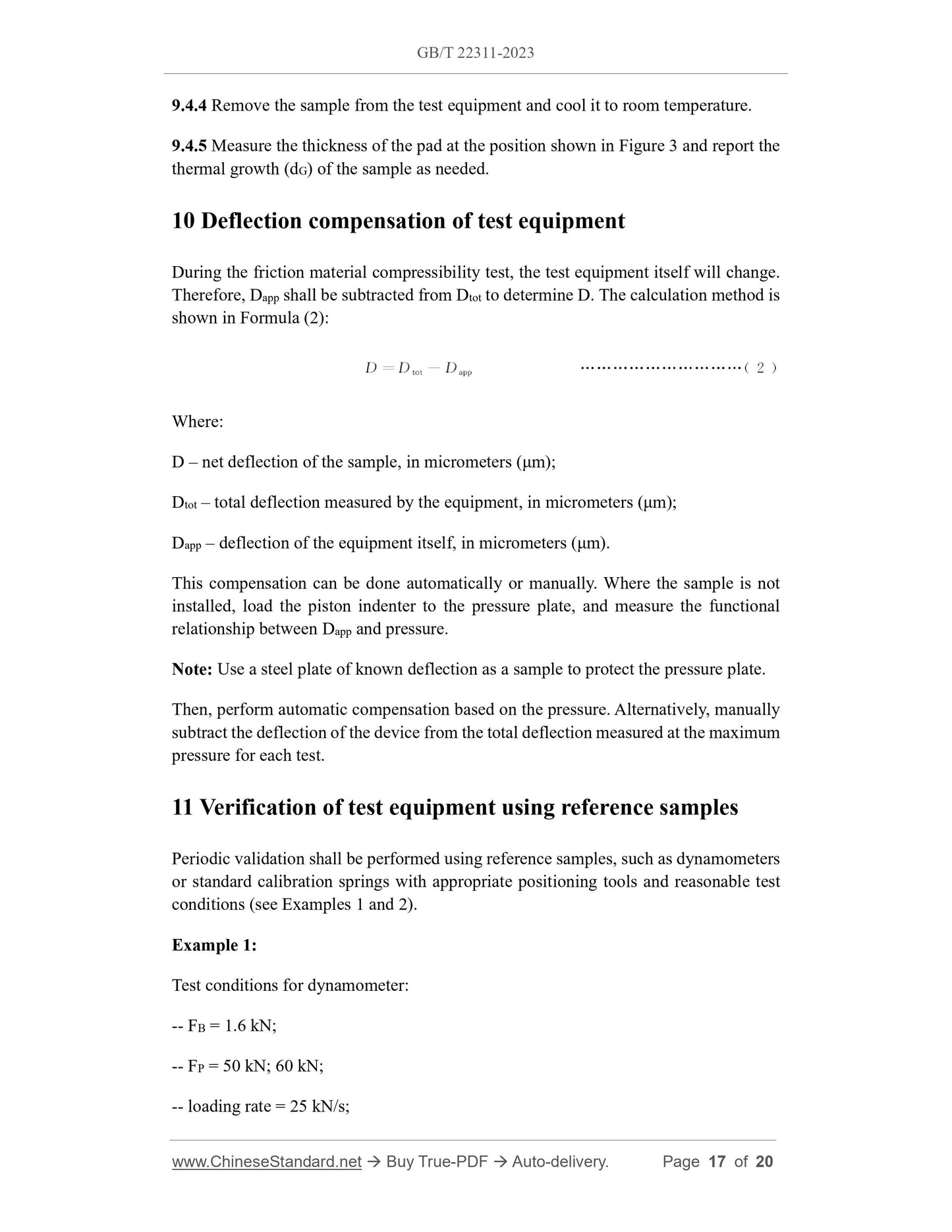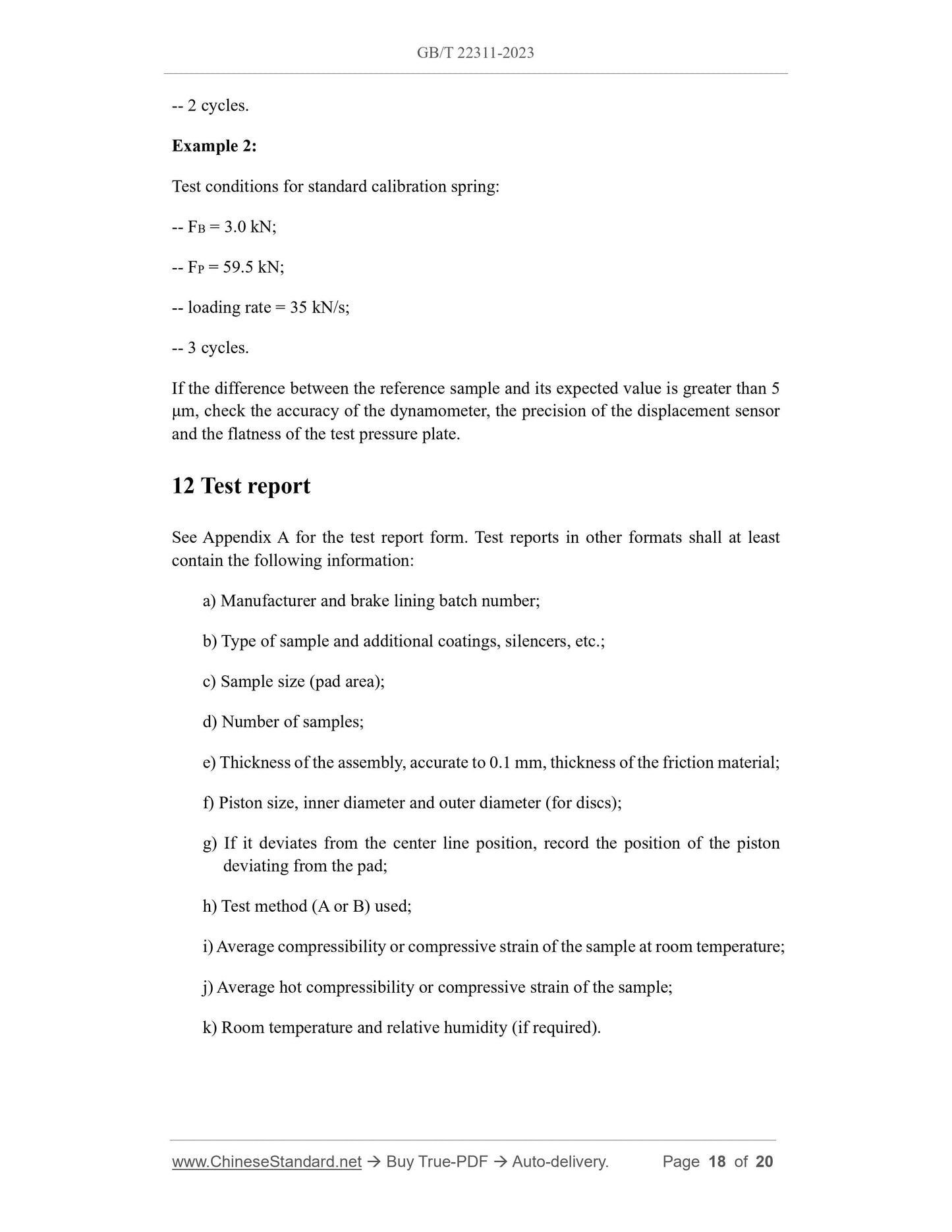1
/
of
8
www.ChineseStandard.us -- Field Test Asia Pte. Ltd.
GB/T 22311-2023 English PDF (GB/T22311-2023)
GB/T 22311-2023 English PDF (GB/T22311-2023)
Regular price
$230.00
Regular price
Sale price
$230.00
Unit price
/
per
Shipping calculated at checkout.
Couldn't load pickup availability
GB/T 22311-2023: Road vehicles - Brake linings - Compressive strain test method
Delivery: 9 seconds. Download (and Email) true-PDF + Invoice.Get Quotation: Click GB/T 22311-2023 (Self-service in 1-minute)
Newer / historical versions: GB/T 22311-2023
Preview True-PDF
Scope
This document specifies the principle, test equipment, technical requirements for testequipment, sample preparation, test methods, deflection compensation of test
equipment, verification of test equipment using reference samples and test report for
the compressive strain test method of brake linings of road vehicles.
This document applies to the measurement of compressive strain of cut samples of
brake lining disc brake pad assemblies, disc or drum friction materials.
Basic Data
| Standard ID | GB/T 22311-2023 (GB/T22311-2023) |
| Description (Translated English) | Road vehicles - Brake linings - Compressive strain test method |
| Sector / Industry | National Standard (Recommended) |
| Classification of Chinese Standard | Q69 |
| Classification of International Standard | 43.040.40 |
| Word Count Estimation | 14,133 |
| Date of Issue | 2023-12-28 |
| Date of Implementation | 2024-07-01 |
| Older Standard (superseded by this standard) | GB/T 22311-2008 |
| Issuing agency(ies) | State Administration for Market Regulation, China National Standardization Administration |
Share
